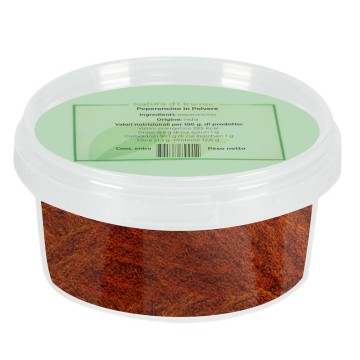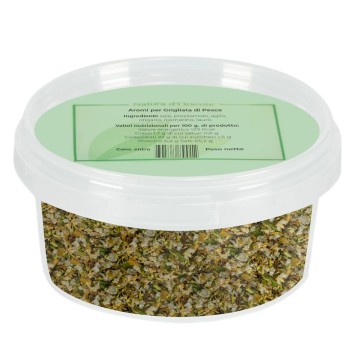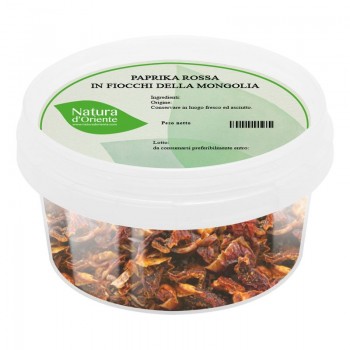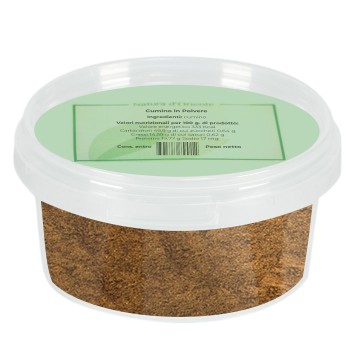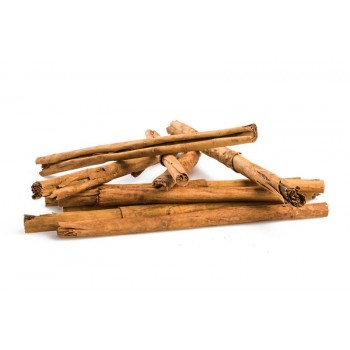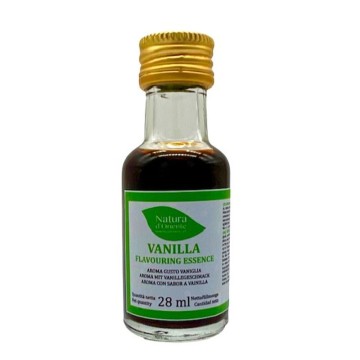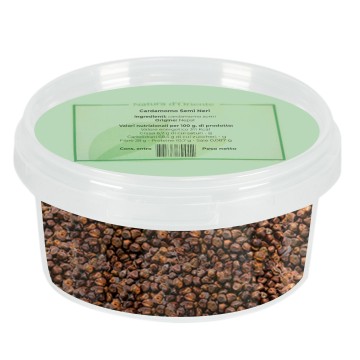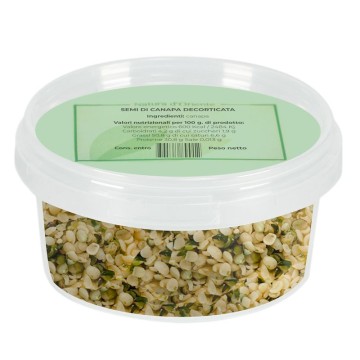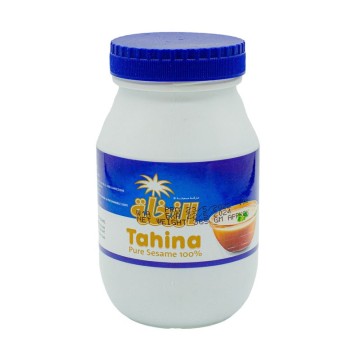Teff is a cereal traditionally used in the Horn of Africa, considered a staple food for the populations of this territory. For several decades it has become increasingly sought after for its nutritional qualities, being rich in beneficial compounds and gluten-free.
It is transformed into a flour to create doughs rich in flavor and nutrients, preferred by many as a gluten-free alternative . Its flavor is delicate, earthy and with notes of hazelnut, much appreciated for desserts and pancakes. The white varieties are delicate, with notes that evoke chestnuts, while the dark ones have a more earthy taste, sometimes reminiscent of hazelnuts and chocolate. The darker the variety, the more pronounced and decisive the flavor will be.
Teff: properties and benefits
Teff is high in calcium, and is rich in resistant starch, a type of dietary fiber that can aid blood sugar management and colon health. Compared to other grains, teff is also a good source of minerals such as copper, magnesium, potassium, phosphorus, manganese, zinc and selenium. The flour of this cereal also contains good doses of proteins and essential amino acids, particularly lysine - an amino acid that is sometimes missing in other flours, and which is useful for the absorption of calcium and the production of proteins. It contains a considerable amount of dietary fibre, and has a moderate glycemic index compared to other cereals.
Since teff flour naturally contains no gluten, it is a perfect alternative to wheat flour. Teff is fermented to reduce the effects of phytic acid, which may reduce the absorption of other nutrients, using a water process. To ferment the flour is mixed with water and left at room temperature for a few days. The action of natural yeasts and lactic bacteria breaks down the sugars and part of the phytic acid.
Using teff flour in cooking
Teff flour can be used for dough, as a versatile ingredient for different recipes. Its gluten-free flour is used to prepare bread, crackers, focaccias and many other baked products. You can use teff to create desserts such as cakes, biscuits, muffins, waffles, banana and chocolate crepes. This cereal is used in Ethiopian cuisine to knead the traditional bread of the Horn of Africa, injera. It is a soft, naturally leavened focaccia bread, subjected to teff flour fermentation for 1-3 days. A flat bread is obtained from it, a sort of spongy crepe, with a sour and tasty flavor that is often combined with exotic spices. It is prepared by pouring the fermented teff flour batter onto a hot griddle, cooked in a few minutes. Injera is usually served with meat and vegetable stews such as spicy wat or zighini. Another typical Ethiopian bread made from teff flour is kit'ta, an unleavened bread.
Teff flour is an excellent alternative to wheat for producing foods such as fresh gluten-free pasta.
It is also used as a thickener in the preparation of stews, soups, sauces and puddings. It is also possible to create a recipe by cooking teff flour with chickpea flour and milk to create an Ethiopian polenta called fafa. Alternatively, you can use teff polenta served with chicken or other ingredients.
Teff pancakes with ricotta and courgettes
Ingredients: 1/2 cup of teff flour - 2 cups of grated courgettes - 1 cup of ricotta - ¾ cup of parmesan or pecorino romano for garnish - 1/4 cup chopped basil for garnish - 2 onions (green and white), chopped - 2 cloves of garlic, chopped - 1 tablespoon lemon juice – a few zest of one lemon – 1 pinch of nutmeg - 1 beaten egg - 3 tablespoons of extra virgin olive oil - salt and freshly ground black pepper
Preparation
In a large bowl, mix the courgettes, ricotta, parmesan or pecorino , basil, green onion, garlic, lemon juice and zest and nutmeg. Add the egg and mix until the mixture is blended and smooth. Stir in the teff flour and season with salt and pepper. The consistency of the mixture should be that of a very thick batter. Form 12 balls of about 5 cm with your hands and place them on a baking tray lined with baking paper. Flatten them so they are about 1cm tall, cover and refrigerate for 20 minutes (up to 1 day).
Preheat the oven to 180 degrees. In a large pan, heat mage the oil over medium-high heat. Add half the pancakes, depending on the size of the pan, taking care to space them. Cook for 3-4 minutes on each side, until evenly browned on both sides. Transfer the pancakes to the baking sheet and repeat the operation with the remaining pancakes with the rest of the olive oil. Bake the pancakes in the oven for 12-15 minutes, then let them cool. Serve with a sprinkling of basil and grated cheese.
Origin and cultivation
Teff is a tropical cereal belonging to the Poaceae family of grasses. The flour comes from the seeds of the “Eragrostis tef”, a plant native to Africa. It had its debut in the areas of Ethiopia and Eritrea, where it is still cultivated today. It is thought to have originated in the Horn of Africa thousands of years ago, thriving thanks to its resistance to drought and adverse environmental conditions. Today's teff probably derives from the wild variety Eragrostis pilosa, domesticated about 3000 years ago. Teff is found available in both darker and lighter varieties, with the most common being the brown and ivory versions of teff. However, it is found in a wide range of colors, from creamy white and red to dark brown. Around 1600 have been classified, from the lightest to the brownest shades, such as the "tseddia" variety, up to black teff. In general, commercially teff falls into three categories: white (netch), red/brown (qey) or mixed (sergegna). Having very small grains compared to the wheat grain, teff is sometimes prepared and consumed as a whole grain rather than as flour. Mild varieties tend to be slightly sweet, and are popular in cooking. Additionally, teff is used along with other grains to produce Ethiopian and Eritrean craft beer t'alla; dark, with low alcohol content, it also incorporates the leaves of "gesho", an African shrub used for fermentation. Although it grows mainly in African countries, with ecological agricultural methods, the United States, India and Australia also cultivate this cereal.


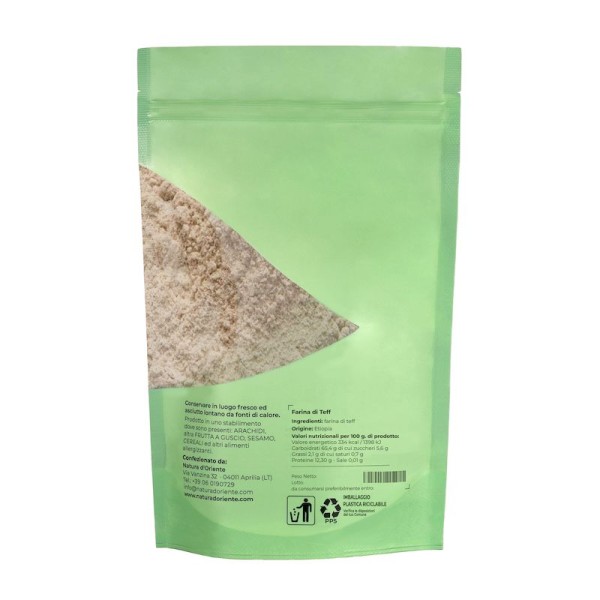






 By buying this product you can collect up to
By buying this product you can collect up to
